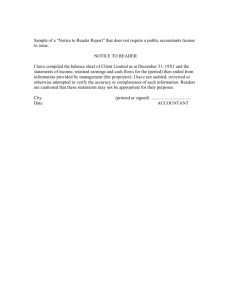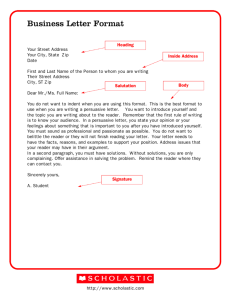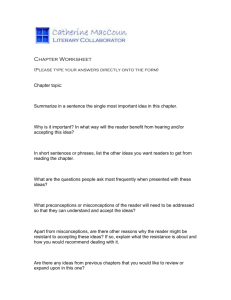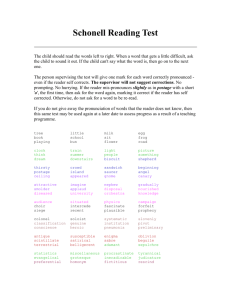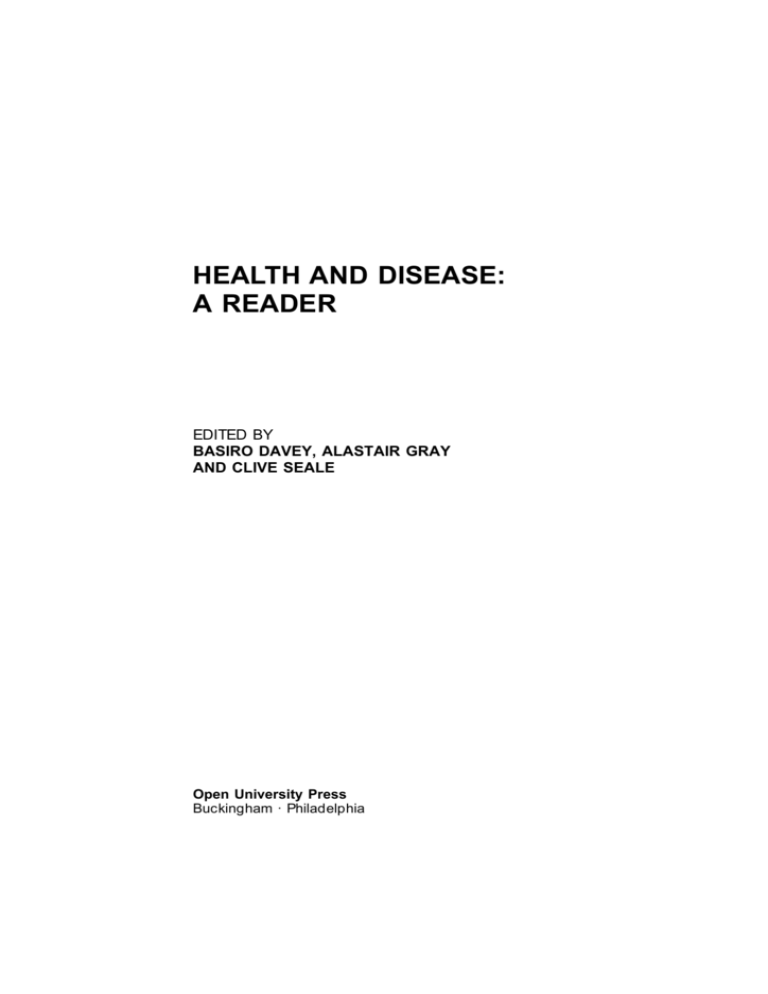
HEALTH AND DISEASE:
A READER
EDITED BY
BASIRO DAVEY, ALASTAIR GRAY
AND CLIVE SEALE
Open University Press
Buckingham · Philadelphia
Open University Press
Celtic Court
22 Ballmoor
Buckingham
MK18 1XW
email: enquiries@openup.co.uk
world wide web: www.openup.co.uk
and
325 Chestnut Street
Philadelphia, PA 19106, USA
First edition published 1984
Reprinted 1986, 1988, 1989, 1990, 1992, 1993
Second edition published in 1995
Reprinted 1995, 1996, 1999, 2000, 2001
First published in this third edition 2001
Selection and editorial material © The Open University 2001
All rights reserved. Except for the quotation of short passages for the purpose of
criticism and review, no part of this publication may be reproduced, stored in a
retrieval system, or transmitted, in any form or by any means, electronic, mechanical,
photocopying, recording or otherwise, without the prior written permission of the
publisher or a licence from the Copyright Licensing Agency Limited. Details of such
licences (for reprographic reproduction) may be obtained from the Copyright
Licensing Agency Ltd of 90 Tottenham Court Road, London, W1P 0LP.
A catalogue record of this book is available from the British Library
ISBN 0 335 20967 X (pbk) 0 335 20968 8 (hbk)
Library of Congress Cataloging-in-Publication Data
Health and disease : a reader / edited by Basiro Davey, Alastair Gray, and Clive Seale.—
3rd ed.
p. cm. — (Health and disease series)
Includes bibliographical references and index.
ISBN 0–335–20968–8 (hb) — ISBN 0–335–20967–X (pbk.)
1. Public health. 2. Social medicine. 3. Medical care. I. Davey, Basiro. II. Gray,
Alastair, 1953– III. Seale, Clive. IV. Series.
RA436 .H43 2002
362.1—dc21
Typeset in 10/11.5pt Sabon by Graphicraft Limited, Hong Kong
Printed in Great Britain by Biddles Limited, Guildford and King’s Lynn
2001036256
Contents
Acknowledgements
General introduction
Part 1 Cultural aspects of health, illness and healing
Introduction
1
2
3
4
5
6
ix
xv
1
Mirage of health – RENÉ DUBOS
Hippocrates – ROY PORTER
Feed a cold, starve a fever – CECIL HELMAN
What is health? – MILDRED BLAXTER
Illness as metaphor – SUSAN SONTAG
The problem of the whole-person in holistic medicine –
4
10
14
21
28
DAVID ARMSTRONG
33
7
Protecting a vulnerable margin: towards an analysis of how
the mouth came to be separated from the body – SARAH NETTLETON
8 Hysteria and demonic possession – MARY JAMES
9 Cross-cultural psychiatry – CECIL HELMAN
10 Media and mental illness – GREG PHILO
11 Public eyes and private genes – PETER CONRAD
37
44
51
57
62
Part 2 Experiencing health, disease and health care
Introduction
69
12
13
14
15
Two accounts of mental distress – MARY O’HAGAN
Being there – THE SAINSBURY CENTRE FOR MENTAL HEALTH
The insanity of place – ERVING GOFFMAN
The social impact of childhood asthma –
72
76
82
ANDREW NOCON AND TIM BOOTH
87
vi
Contents
16 Beyond the disorder: one parent’s reflection on genetic counselling –
93
97
RUTH MCGOWAN
17 Coping with migraine – SALLY MACINTYRE AND DAVID OLDMAN
18 Using alternative therapies: marginal medicine and central
concerns – URSULA M. SHARMA
19 The social preservation of mind: the Alzheimer’s disease
experience – JABER F. GUBRIUM
20 ‘Some bloody do-gooding cow’ – TONY PARKER
21 Pride against prejudice: ‘lives not worth living’ – JENNY MORRIS
22 The stigma of infertility – NAOMI PFEFFER
23 Identity dilemmas of chronically ill men – KATHY CHARMAZ
24 Costs of treating AIDS in Malawi and America – DAVID FINKEL
102
109
113
118
122
126
132
AND THOMAS GARRETT
Part 3 Influences on health and disease
Introduction
25 Health: 1844 – FRIEDRICH ENGELS
26 The health and wealth of nations –
137
141
DAVID E. BLOOM AND
147
151
155
160
DAVID CANNING
27
28
29
30
Agriculture’s two-edged sword – JARED DIAMOND
Climate and health – PAUL R. EPSTEIN
Deaths under 50 – MEDICAL SERVICES STUDY GROUP
Prevention is better . . . – HELEN ROBERTS, SUSAN SMITH
AND CAROL BRYCE
31
32
33
34
35
36
37
38
Malingering – RICHARD ASHER
Causes of declining life expectancy in Russia – FRANCIS NOTZON ET
The psychosocial causes of illness – RICHARD WILKINSON
Entitlement and deprivation – JEAN DRÈZE AND AMARTYA K. SEN
Why must I be a teenager at all? – BARRY BOGIN
Good gene, bad gene – JAMES D. WATSON
Biodemographic trajectories of longevity – JAMES W. VAUPEL ET AL.
A new division of the life course – PETER LASLETT
AL.
Part 4 The role of medicine
Introduction
39 The medical contribution – THOMAS MCKEOWN
40 The importance of social intervention in Britain’s mortality decline
c. 1850–1914: a re-interpretation of the role of public health –
SIMON SZRETER
41
42
43
44
45
46
Effectiveness and efficiency – A.L. COCHRANE
Medicine matters after all – JOHN P. BUNKER
Ethical dilemmas in evaluation – A CORRESPONDENCE
The global eradication of smallpox – MARC A. STRASSBURG
The epidemics of modern medicine – IVAN ILLICH
The mode of state intervention in the health sector –
VICENTE NAVARRO
164
170
174
180
184
190
195
198
203
207
210
219
227
234
242
259
264
270
Contents
Part 5 The social context of health care
Introduction
277
47 Health inequalities and the health of the poor: what do we know?
what can we do? – D.R. GWATKIN
48 Ageism in cardiology – ANN BOWLING
49 Should smokers be offered coronary bypass surgery? – M.J. UNDERWOOD
AND J.S. BAILEY; MATTHEW SHIU
50 Evidence based medicine: what it is and what it isn’t – DAVID
SACKETT ET AL., WITH REPLIES
51 Pubic participation in the evaluation of health care – RAY FITZPATRICK
AND DEENA WHITE
52 Health technology and knowledge – ANDY ALASZEWSKI AND IAN HARVEY
53 Improving NHS performance: human behaviour and health policy –
280
286
290
293
298
302
308
CHRIS HAM
54 Health sector reform: lessons from China –
vii
GERALD BLOOM
AND GU XINGYUAN
55 The evolution of the health-care systems in the United States and
the United Kingdom: similarities and differences – ROSEMARY STEVENS
56 The role of the hospital in a changing environment – MARTIN MCKEE
AND JUDITH HEALY
Part 6 Health work
Introduction
57 The carer at home – MICHAEL YOUNG AND LESLEY CULLEN
58 ‘We didn’t want him to die on his own’ – nurses’ accounts of
nursing dying patients – DAVID FIELD
59 Professionalism and the conundrum of care – CELIA DAVIES
60 Truth, trust and paternalism – THURSTAN B. BREWIN
61 Doctor knows best – ANN OAKLEY
62 Normal rubbish: deviant patients in casualty departments
– ROGER JEFFERY
63 Food-work: maids in a hospital kitchen – ELIZABETH PATERSON
64 Professions allied to medicine: continuity and change in a complex
workforce – LESLEY DOYAL AND AILSA CAMERON
65 The village health worker: lackey or liberator? – DAVID WERNER
Part 7 Prospects and speculations
Introduction
66 The new globalization, food and health – TIM LANG
67 Global AIDS epidemic: time to turn the tide – PETER PIOT
68 Doctor in the house: the Internet as a source of lay health knowledge
and the challenge to expertise – MICHAEL HARDEY
69 Ageing and medicine – JOHN GRIMLEY EVANS
70 Brave new world II – TOM SHAKESPEARE
71 Exits – SALLY VINCENT
72 The shadow of genetic injustice – BENNO MÜLLER-HILL
313
319
326
333
336
340
346
352
357
363
369
375
382
389
392
396
400
406
411
414
420
viii
73
74
75
76
Contents
The evolution of Utopia – STEVE JONES
Spawn of Satan? – NICOLA GRIFFITH
The flesh – J. DESMOND BERNAL
Enough already! The pervasiveness of warnings in everyday life –
425
431
433
SHULAMIT REINHARZ
438
Name index
Subject index
442
447
General introduction
The third edition of this Reader, building on the successful 1984 and 1995 editions,
reflects a continuing steady expansion of research and publication relevant to the subjects
of health and disease. The increasing diversity of this field means that we can draw on
a yet more varied range of authors and commentators. The growth of the disability
rights movement, the increased importance of research into human genetics, the creation
of new medical therapies, concerns about the environment and health, the changing
patterns of mortality associated with social and political changes in some parts of the
world, the trend towards ‘evidence based’ medicine and new thinking about interprofessional responsibilities in health care are a few of the developments whose
importance has increasingly been recognized since the last edition of this book, and
which are now reflected in our choice of articles.
This Reader contains contributions from most of the major academic disciplines
engaged in active research into some aspect of health and disease, together with extracts
from official reports, letters, essays, fiction and interviews. Some contributions are
deeply embedded in the concepts and viewpoints of a constrained sphere of interest;
others bridge traditional disciplinary boundaries and attempt a synthesis of views, or
reach into the future to speculate about the shape of things to come. Many difficult
decisions had to be made on what to include and what to leave out. In some cases we
have kept articles from previous editions, though these may have been re-edited and
reduced in length; generally these are ‘classic’ texts, which are difficult to find in print.
Two of the 37 ‘new’ articles in this edition have not been published previously.
The diversity of the material can be exemplified by considering several articles that
focus on a single topic, that of genetics. In Part 1, the sociologist Peter Conrad shows
how genetic ideas have influenced public perceptions of the causes of human behaviour and capabilities, through their popularization in the mass media. In Part 2, Ruth
McGowan describes, from the viewpoint of a parent, how genetic counselling can throw
up many ethical and personal dilemmas in the way in which it conveys vital information.
The biologist James D. Watson presents an optimistic vision in Part 3 of the promise of
xvi
General introduction
genetic science, stressing the desirability of ‘banishing genetic disability’ through the
kinds of screening and counselling programmes that Ruth McGowan experienced. In
Watson’s vision of the future, genetic progress would also have ‘banished’ McGowan’s
sons.
Benno Müller-Hill and Steve Jones, both biologists, take different views of the future
in Part 7 – the first envisaging growing ‘genetic injustice’ in inequitable social arrangements, and the second holding out the prospect of a gradual reduction in the amount
of genetically based disease. Finally, the disability activist Tom Shakespeare raises
important questions about a ‘brave new world’ that may be emerging under the influence of genetic science, in which a form of ‘disability eugenics’ becomes the norm.
Several of these articles make reference to underlying economic factors in genetic
science and its application, and to historical studies that shed light on current events,
such as the story of the eugenics movement. Thus a number of perspectives and academic
disciplines converge on this single topic, as they do for many others represented in this
book.
The medical model of disease and the contribution of medicine to health and health
care arise in many parts of this Reader – for example, in the classic articles by McKeown,
Szreter, Illich, Navarro and Cochrane. The practice of medicine and its interaction with
health and social policy are covered by Sackett et al., Chris Ham and Ann Bowling,
among many others. Richard Wilkinson questions the medical model and argues for
more emphasis on psychosocial causes of ill health.
The investigation of any aspect of health and disease can benefit not only from a
multidisciplinary approach, but one that also values the subjective and illuminative as
well as the objective and quantifiable. Both qualitative and quantitative approaches are
well represented in this Reader. Accounts of the experience of illness in Part 2 often
draw on qualitative interviews; by contrast, Mildred Blaxter shows the value of quantifying answers to the question ‘What is health?’ by analysing the vocabulary and
ideas expressed by 900 people in a nationwide survey. Health economists also draw on
quantitative methods to answer questions of causation, as can be seen in the contribution
by Francis Notzon et al. on the factors leading to declining life expectancy in Russia.
Historians and social anthropologists can be found in this edition too – for example,
in Roy Porter’s account of Hippocratic medicine and Mary James’ vivid description of
the treatment of hysteria in nineteenth century France; in Jared Diamond’s analysis of
the health decline following the first agricultural revolution, or Elizabeth Paterson’s
article on working practices in a hospital kitchen. The biological dimension is prominent
in articles on the evolution of longevity by Vaupel et al., on theories of ageing by GrimleyEvans and in the environmental perspective provided by Paul Epstein in Part 3.
Thus the contributions to this Reader differ greatly in style, content, focus and intent.
Given this diversity and the broad reach of the selection, the editors have imposed a
degree of order by grouping the contributions under seven headings:
Part
Part
Part
Part
Part
Part
Part
1
2
3
4
5
6
7
Cultural aspects of health, illness and healing
Experiencing health, disease and health care
Influences on health and disease
The role of medicine
The social context of health care
Health work
Prospects and speculations.
General introduction
xvii
Each part begins with a short introduction prepared by the editors, which aims to
draw the reader’s attention to common themes and sharp discontinuities. Within each
part the emphasis has been on choosing material that adequately represents the
range of disciplines, perspectives and styles of writing. To this end, we have edited the
majority of articles to reduce their length from the original texts, thereby enabling us
to include a larger selection; in some cases, the editors had the assistance of authors
or trustees in carrying out this task. We have also edited the references cited by each
article, but have retained the original citation styles. Where substantial and significant
parts of a text have been omitted, this has been acknowledged in the note at the end of
the article, which also contains a brief description of the author(s) and a full reference
to the original source in which the unabridged material was published.
This Reader has been assembled as part of an Open University second-level course
for undergraduate study and professional development, entitled ‘Health and Disease’
(course code U205), which explores in depth the possibilities of a multidisciplinary
approach to a range of health and disease topics. The course consists of this Reader,
eight specially prepared distance-teaching textbooks (published by Open University
Press), and audiovisual materials. This Reader is indispensable for students taking the
course, but it has also been designed to stand alone as a coherent and self-contained
collection, accessible to a wide readership, which includes health workers and social
workers of all kinds, students of the many disciplines represented here and the general
public.
Allie




